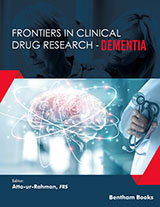Abstract
Alzheimer's disease is a neurodegenerative disorder that results in a loss of memory, cognitive problems, and personality change. The frequency of this disease is increasing rapidly due to the aging world population. Every year, more people are exposed to this age-related disorder. It is expected that the number of individuals diagnosed with Alzheimer’s disease would increase to 100 million by 2050. The treatment of Alzheimer’s disease costs more than $200 billion annually in the US and this cost will possibly grow to $1 trillion annually by 2050. There are two categories of drugs used for the treatment of Alzheimer's disease; while the first category attempts to treat the symptoms of the disease (such as rivastigmine, galantamine, and donepezil), the second category focuses on the specific site or physiological factor of the disease. Still, there are attempts to develop new therapies to prevent, defer, slow down the progress, or ameliorate the symptoms of this disease. Spectrophotometric, chromatographic, and electrochemical methods have proven to be sensitive and reliable for the determination of numerous compounds. In this chapter, recent advances in different analysis methods of various Alzheimer’s disease drugs are summarized. Finally, this chapter aims to explore the advantages of methods as well as highlight the future perspectives of these methods in assaying Alzheimer drugs in pharmaceutical and biological samples.
Keywords: Alzheimer’s disease, Amperometry, Analysis, Donepezil, Galantamine, Gas chromatography, Huperzine A, Liquid chromatography, Memantine, Potentiometry, Rivastigmine, Spectrophotometry, Spectrofluorimetry, Tacrine, Validation, Voltammetry.






















